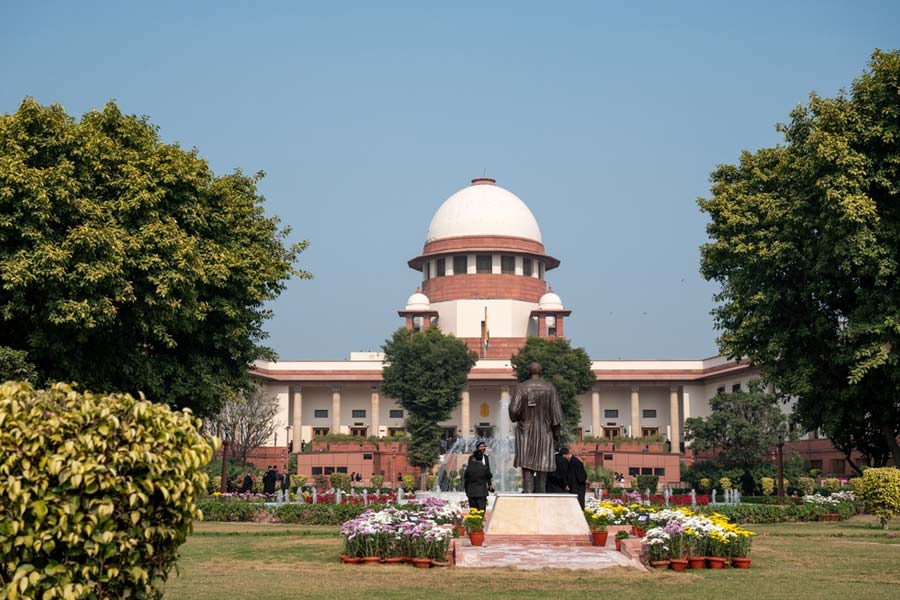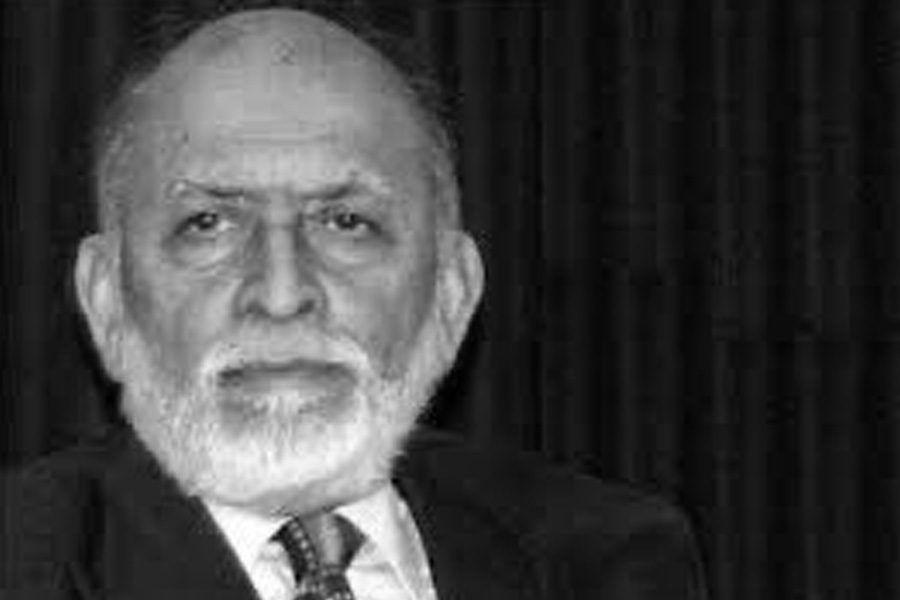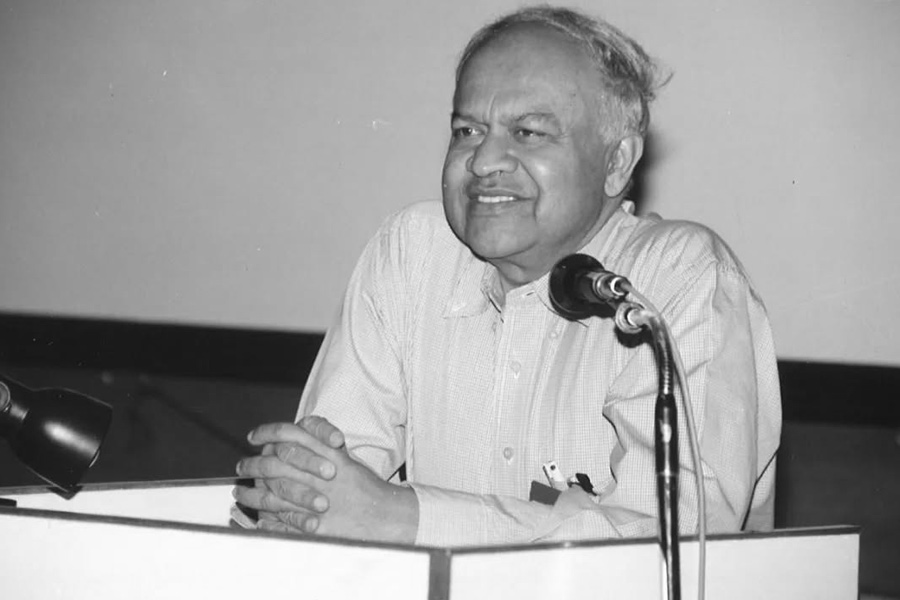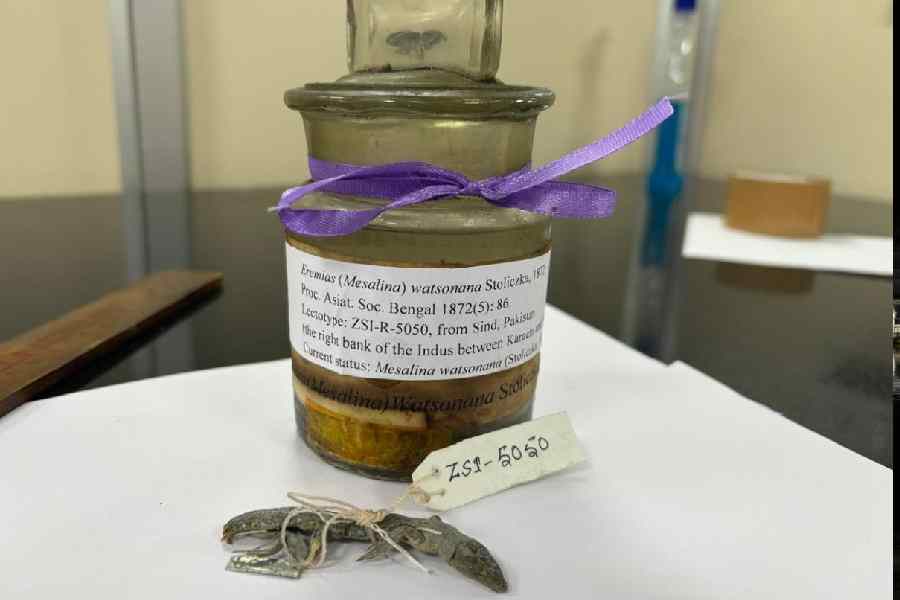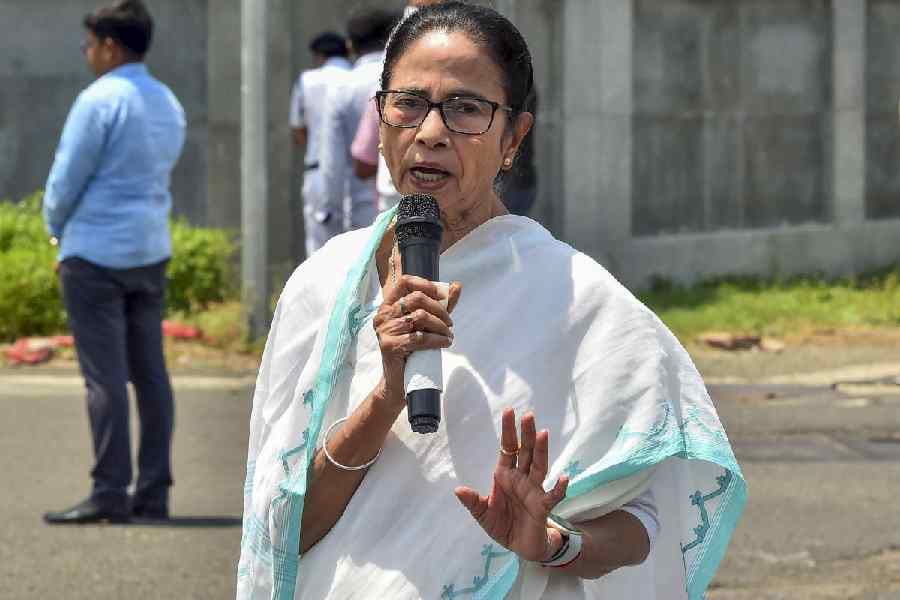Darkness descends like an inky blanket over the steep hills cradling Ranchi. The lights dim as the town retires for yet another uncertain night.
A faint wick glows inside a concrete hovel off the foul smelling Morabadi ground in the heart of the town. Three heads pore over a frayed road map of the city, etching rough lines across the vital linkages connecting the scattered townships and the city proper. A countrymade gun lies at a corner beside a neat pile of ammunition. These men are prepared for the worst.
The terrain of operation is uneven and the plot thick with unpredictable twists. Even the day is inauspicious, if the seers are to be believed. The great tribal roadshow is about to unfold amidst notes of discord. The birth of Jharkhand professes to be a difficult one. While the controversy over the issue of chief ministership deepens with the prime minister, Atal Bihari Vajpayee, rejecting the candidature of the Jharkhand Mukti Morcha chief, Shibu Soren, and the latter snapping ties with the National Democratic Alliance, the relentless march of the red underground into the state's industrial heartland spells trouble for the 'newborn'.
The Jharkhand Mukti Manch, a frontal organization of the Maoist Communist Centre, plans to hold a mega-rally in Ranchi on November 15, the day the new assembly is sworn in. Four other rallies by the Bharatiya Janata Party and the Jharkhand Mukti Morcha on the same day are expected to add to the chaos.
Over the past two months, Naxalites have struck selective targets with renewed vengeance. Last month, the superintendent of Lohardaga police was killed in a People's War ambush in a remote village at Chandwa block bordering Palamau. It was followed by the attack on railway police force personnel by the Maoist guerrillas aboard the Gaya-Asansol passenger train. But the most decisive strike by the MCC was in Dhanbad on October 30, when it gunned down four bodyguards of the Bihar minister for higher education, Saba Ahmed, at a football match in Tundi block, in an aborted bid on the minister's life. The same night, the outfit hacked five villagers to death in Palamau in an act of 'retribution'.
The attacks reflect a distinct shift in the outfit's strategy on the eve of the formation of Jharkhand. From a predominantly rural base in the highlands of Palamau, Gaya and Aurangabad during the mid-Seventies, the MCC has forayed deep into the coal mines of Dhanbad and the industrial nodes of Ranchi. Recent intelligence reports indicate that the outfit's Bihar-Bengal area committee has penetrated semi-urban areas of the East Singbhum district outlying the steel township of Jamshedpur. Besides, the Maoists have also accelerated the pace of activities in West Bengal's Purulia and Midnapore districts bordering Bihar, where they had lain dormant for the past two decades.
Why the shift? Left analysts attribute it to a growing sense of insecurity among the insurrectionists. With the Dalit peasantry rooting for peace, the outfit's charm is gradually waning in the rural hinterland where it ran a parallel administration. The MCC feels marginalized as the region's realpolitik undergoes sweeping changes and neo-rightists singe the terrain with their crippling brand of communal politics. So the desperation to grab headlines.
This frenzied quest for publicity has also precipitated changes in its strike mode and cadre-hierarchy. The outfit, like its Naga and Manipuri counterparts, now believes in snaring them young. It has nurtured at least two juvenile hit squads over the past three years to take on high-security targets.
According to the police, the attack on the higher education minister was carried out by a gang aged between 12 to 16. Most of these teenagers, indoctrinated into Maoism as toddlers, are recruited from the Dalit villages of Palamau and Gumla controlled by the MCC. The outfits intimidate the villagers into 'donating' the children to the cause of revolution and any act of defiance is punished with death.
Children come in handy while breaching security cordons and melting into the crowd unsuspected. 'In most cases, these fleetfooted youngsters manage to escape unlike older cadre, who often blunder,'' says a senior police officer in Daltonganj.
But these 'children'' and their mentors aspire for greater glories. As the outfit becomes city-centric, the role of the 'little insurgents'' assume significance. They move in th city unhindered, gathering intelligence and often double up as couriers ferrying arms from one hideout to another. More than a dozen of these 'teenaged commandos' have infiltrated Ranchi and its suburbs over the past fortnight.
The prospect of a non-tribal government in Jharkhand has put a spanner in the MCC's spin on things. The irate Maoists, who will now confront an administration manned by their 'class and political' enemy, have even issued a fatwa against the projected BJP chief minister, Babulal Marandi.
MCC's newfound aggression is also linked to its chequered economics. The outfit, which traditionally controlled the trade in tendu leaves (used for making bidis) in Palamau, Chhatra and Aurangabad is losing out to middlemen hired by bidi merchants in Patna and Calcutta. Though it has an edge in firepower, the extremists find themselves short of lucre which the middlemen shower in plenty.
As a result, the MCC, which once monopolized 'lifting and transportation' contracts, is facing resistance at the grassroots level. This has disrupted flow of funds and coffers are fast emptying.
To tide over the funds crunch, the MCC tried breaching the trade unions of the Dhanbad coal mines towards the beginning of the past decade. The Jan Suraksha Sangharsh Manch, an MCC front, began mobilizing miners but the coal mafia clamped down. Frustrated, the cadre temporarily retreated. This urban exercise proved to be a misadventure for the oufit found wanting in 'sufficient motivation power'.
What the MCC fails to grasp is that violence cannot be a tool for grabbing power, especially in an urban milieu, where the targets are capable of retaliation. Use of brute force has an adverse impact on a thinking public and the MCC, hamstrung by its rural background and policy of intimidation, finds it difficult to get a toehold in Jharkhand.
When the Communist Party of India (Marxist-Leninist) was formed after the dissolution of the All-India Coordination Committee of Communist Revolutionaries and the merger of Maoist factions, one breakaway splinter, Dakshin Desh, refused to relinquish its identity. This group considered mass mobilization at the grassroots level a prerequisite to armed offensives. The faction led by Amulya Sen and Kanai Chatterjee singled out the Jangal Mahal area in Bengal's Burdwan district for its activity. This region with a sizeable tribal population and dense forests was ideal for launching a Maoist movement.
Abject poverty and exploitation by local landlords made the villagers vulnerable to the 'red ideology'. The party organized militia squads and carried out blatant propaganda to politicize the peasantry.
But restlessness soon gripped the party rank and file. Not content with their ambit of dominance, the group gradually spilled over to Palamau, Gaya and Aurangabad, districts of south Bihar. As activities gained momentum, the founders formed the Bihar-Bengal area committee to control operations and mastermind strategies. The Dakshin Desh was eventually re-christened the Maoist Communist Centre at a massive rally in the dense forests of Palamau.
The outfit's legacy of armed struggle and Robin Hood-like activities in the villages of south and central Bi- har are difficult to ignore. The militant tag prevents it from toeing a political line and the guerrillas languish in a kind of social isolation. The city, with its diluted form of idealism and skewed social justice, is not their turf. Rather, the hundreds of impoverished villages in Jharkhand's remote backwaters are their natural habitat.
 Tuesday, 20 May 2025
Tuesday, 20 May 2025

